but not only for Hummingbirds
We have been in the country for many years and have never seen this. Last year a downy woodpecker learned to use our hummingbird feeder and came back many times, and might have also brought it’s offspring. Who knows? We were puzzled by how it came to be that the woodpecker would learn to use its long tongue to get to the sugary mix, but then we saw that ants had managed to find the feeder and were entering the feeder holes and many of them were drowning in the base. It is possible that the woodpecker had followed the line of ants and discovered them trapped inside the base.
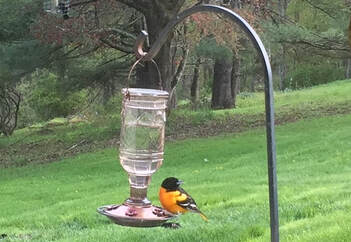 Baltimore Oriole
Baltimore Oriole This year two male hummingbirds showed up in early May - like clockwork, and a week later two females arrived. I was waiting to see whether last year’s woodpecker would join them sooner or later. Indeed a downy woodpecker did show up- probably the same one as last year, and went right back to the feeder, which had not yet been found by ants. But I had other surprises waiting for me.
First, shortly after the downy made his return visit, a Baltimore Oriole appeared and sat for a long time on the perch and then he went with his beak into the opening to drink, and I saw him swallowing. He went from hole to hole before he left. An hour later he returned, but not only by himself, he was joined by two more. The perch got really crowded. One of the male hummingbirds was a bit irritated and attempted to buzz bomb the assembling orioles on the feeder, but he remembered that we have another feeder on the other side of the house. So all was good.
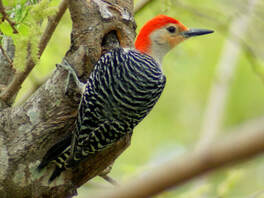 Flicker
Flicker 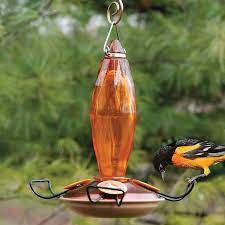
Here is a list of birds that are regularly seen at nectar feeders:
Chickadees, Goldfinches, House Finches, Orioles, Warblers, Woodpeckers.
And here is another list of wildlife that may also be seen at nectar feeders:
Bats, Bears, Butterflies, Insects, Lizards, Moths, Raccoons, Squirrels.
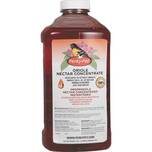
There are feeders especially for bigger birds with wide perches. There is also a special nectar available for Orioles. The woodpeckers will of course be very happy with suet.
What an exciting world in front of my window!
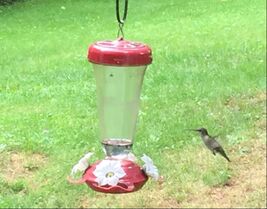
 RSS Feed
RSS Feed